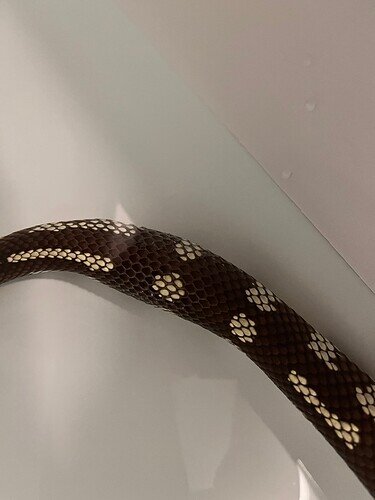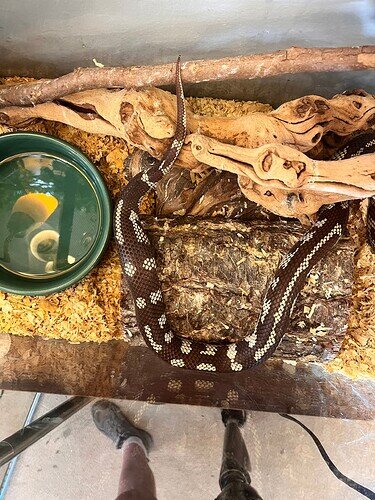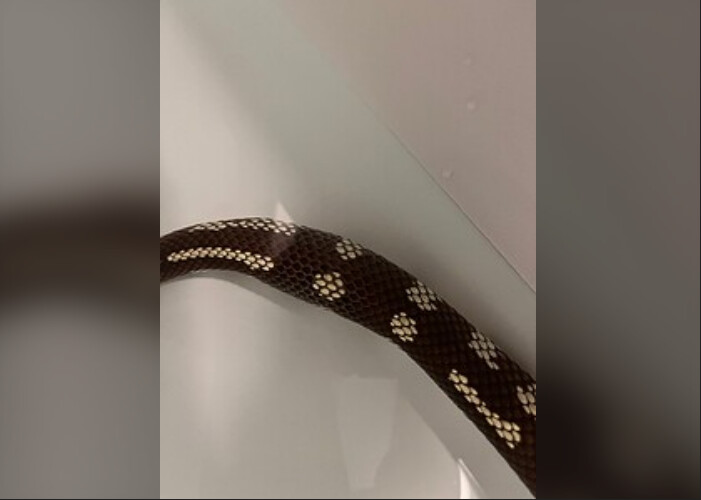Hi all - my snake Peri is (probably) constipated! I brought her to a vet on Monday (Aug 8th) and they gave her some fluids and a laxative to give orally at home. They weren’t able to do a diagnostic X-ray or ultrasound, so they recommended followup with a specialist exotics vet, but nowhere nearby has an opening for weeks. Anyway, I’m trying to figure out if there are any other home treatment options.
I brought her in because I had noticed a visible lump/swelling just above her vent. (See pictures). She’s been passing urates this week, but the last proper defecation I’m sure of was around a month ago (she has a tendency to go in the middle of the night, and she likes burrowing, so I often don’t see it right away). Her activity level has been pretty normal, she doesn’t seem sick or in distress other than the lump. I’ve been giving warm water soaks as well as the laxative.
Anyway, I would really appreciate advice on this - both whether I should try harder to see a specialist vet for a diagnosis, or what I can do in the meantime. (I am located in the Berkeley, California area.)


